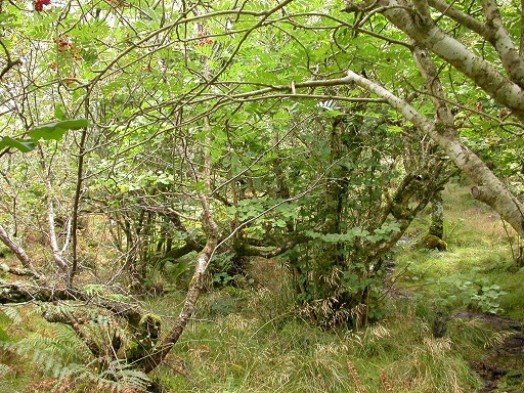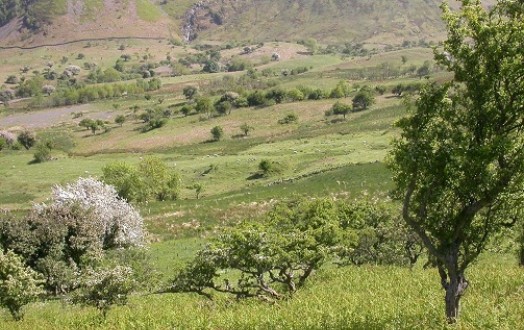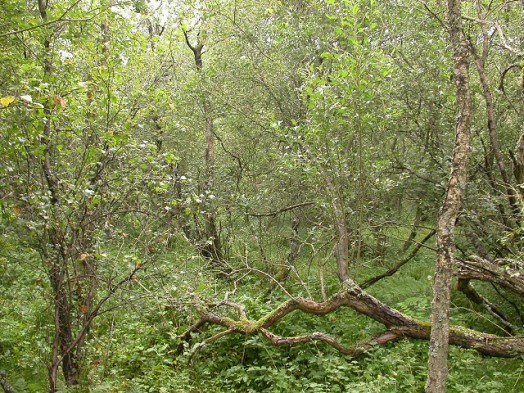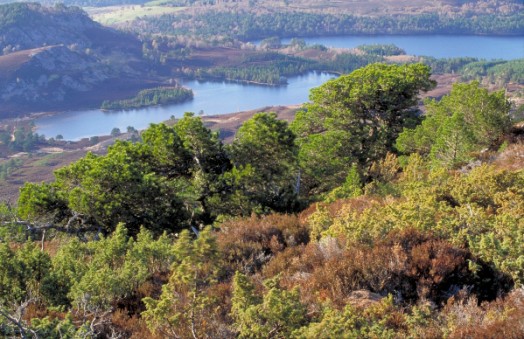Supporting guidance for Managing Scrub of Conservation Value
This is an old version of the page
Date published: 30 March, 2015
Date superseded: 23 December, 2017
The Managing Scrub of Conservation Value option supports the management of scrub of conservation value. Scrub is a general term to describe vegetation dominated by shrubs.
Scrub is frequently undervalued, and when it expands onto open habitats which are of value in their own right, it can be seen as a threat.
However, scrub is an important habitat for a variety of wildlife providing areas in which they can shelter, feed and rear young.
Scrub is found where grazing pressure is low. It is often found at the woodland edge, between woodland and grass or heath land.
Scrub of conservation value occurs throughout the uplands and lowlands. It also establishes on unused, open ground.
Types of scrub which are of conservation value
There are a number of different scrub types linked to different levels of soil moisture and fertility.
Juniper scrub – found on upland and montane heaths, and as an understory in pine and birch woodlands. It also occurs on neutral grassland or mosaics of acid grassland and heathland. It is often found on previously cultivated land.
Atlantic hazel – occurs in the west of Scotland, where a maritime climate results in a special form of dwarf woodland. Here, hazel bark provides a habitat for a range of internationally important lichens and fungi.

Atlantic hazel – © Kate Holl, Scottish Natural Heritage
Hawthorn and blackthorn scrub – found at the woodland edge of more fertile sites. They generally occur with neutral or acidic grassland or heathland. Hawthorn scrub or 'savanna' is an important element of the woodland to open ground transition zone in the uplands.

Hawthorn 'savanna' scrub in Aber Valley, Wales – © Kate Holl, Scottish Natural Heritage
Willow scrub – grows in wetter ground in fens, flushed ground or wet grassland, and in riparian areas.

Willow scrub in Hermand Birchwood, SWT reserve – © Kate Holl, Scottish Natural Heritage
Montane scrub – in the uplands, as the forest trees decline towards their altitudinal limit, scrub species become more prevalent and eventually replace them completely at altitudes above which the forest trees can no longer survive. Scrub in this situation is known as montane scrub and in Scotland is consists mainly of juniper and willows. Further information is available on the Scottish Natural Heritage website.

Montane scrub – © Kate Holl, Scottish Natural Heritage
What needs to be done?
Aim to conserve and encourage the range of scrub types where they are beneficial. Benefits include providing shelter, soil protection, flood mitigation, wildlife habitat and the potential for woodland creation through succession.
Different types of scrub have different management requirements, but in general management will involve manipulating the grazing and browsing levels.
For all types of scrub, restrict grazing at certain times of the year to maintain a balance between the native scrub and open areas. Light grazing with livestock (preferably cattle) in late summer / autumn, and none in the winter allows for moderate scrub growth whilst maintaining woodland glades and open ground. This will benefit the associated wildlife, help protect soils and store carbon.
Deer management may also be necessary to keep herbivore impacts within an acceptable level. Use the woodland grazing toolbox herbivore impact assessment method to assess whether this is required.
Exclude all grazing (deer, sheep and hare) from areas of montane scrub.
Coppicing may be appropriate for some types of scrub, but not in Atlantic hazel woods where it would damage the rich assemblages of oceanic mosses, liverworts and lichens found on hazel stools.
Where scrub is invading important open habitats, you may need to control it.
Grazing management
You will need to submit a grazing management plan with your application to show how you will graze this site.
The best way to manage scrub habitats is by controlling grazing. Ideally herbivore impacts should be assessed as no higher than ‘low’ according to the woodland grazing toolbox herbivore impact assessment method.
If grazing by livestock you should submit a grazing management plan (an example can be seen in the woodland grazing toolbox guidance).
Monitor the outcome of your grazing management. If you need to adjust your plan, seek prior permission to do so.
Because each site is unique, we recommend you seek advice on setting an overall stocking rate (based on the nature of the field layer), and the season and duration of grazing.
